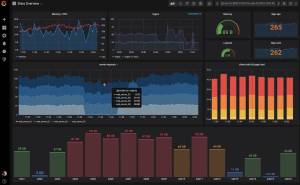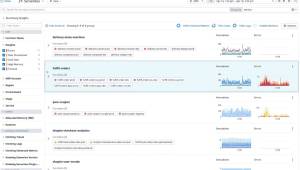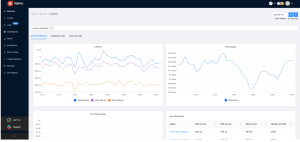SRE and DevOps: The Perfect Partnership
In the world of software development and operations, Site Reliability Engineering (SRE) and DevOps have emerged as dynamic allies, forming […] The post SRE and DevOps: The Perfect Partnership appeared first on ReadWrite.

In the world of software development and operations, Site Reliability Engineering (SRE) and DevOps have emerged as dynamic allies, forming an unbeatable alliance for building and maintaining robust, high-performing systems. Together, they bridge the gap between development and operations, fostering a reliability, agility, and collaboration culture. This unique partnership unleashes the true potential of modern IT organizations, ensuring seamless user experiences and unparalleled business success.
SRE and Its Role in DevOps
In a survey conducted by Blameless, it was revealed that an astounding 50% of participants adopted the SRE model, employing either dedicated infrastructure-focused engineers or embedding full-time SREs directly into their services.
Site Reliability Engineering (SRE) is a pivotal discipline, harmoniously partnering with DevOps to ensure unparalleled success. SRE’s unwavering reliability, availability, and scalability focus perfectly aligns with DevOps goals.
Key principles of SRE
Error Budgets and Service Level Objectives (SLOs): Balancing innovation and stability through defined performance targets and acceptable unreliability thresholds.
Automation and Monitoring: Core to SRE, enabling faster and consistent deployments aided by proactive real-time system health data.
Incident Management and Post-Mortems: Prompt, collaborative responses to disruptions and learning from failures to prevent recurrence.
SRE’s primary objective is reliable, highly available, and scalable systems, enhancing user experience, customer satisfaction, and trust in the product.
SRE and DevOps unite with shared objectives. DevOps focuses on rapid development and continuous delivery, while SRE infuses reliability from the outset. SRE’s post-mortems offer valuable feedback to enhance the development and deployment processes, fostering a collaborative and robust product.
DevOps and Its Role in SRE
DevOps’s core is the commitment to harmonize software development and operations seamlessly. Utilizing CI/CD, developers continuously integrate and deploy code changes in small increments, promoting rapid, low-risk releases. SRE benefits from this approach, embracing a controlled, measured approach to system changes in pursuit of service reliability.
Collaboration and communication form the bedrock of DevOps culture, fostering cross-functional teamwork and ownership. For SRE, this results in faster incident resolution and heightened system resilience.
Infrastructure as Code (IaC) and configuration management are invaluable tools for DevOps and SRE teams. Automating infrastructure provisioning ensures consistency and minimizes manual errors.
DevOps’ agility, speed, and collaboration seamlessly align with SRE’s reliability mission, preserving innovation and swift delivery. The marriage of these methodologies guarantees SRE goals without compromising DevOps’ efficiency.
The Benefits of SRE and DevOps Collaboration
When superheroes unite, a formidable force emerges, and in the realm of technology, the dynamic duo of Site Reliability Engineering (SRE) and DevOps epitomizes this success. This perfect partnership brings forth an array of astounding advantages, propelling organizations to unparalleled efficiency and dependability.
Improved System Reliability and Uptime
Visualize a world where systems never falter and uptime is assured. SRE and DevOps collaboration makes this vision a reality. The teams prioritize system reliability by defining crystal-clear Service Level Objectives (SLOs) and error budgets. Vigilant monitoring and seamless automation nip potential issues in the bud, warding off catastrophes before they materialize. The result? Resilient systems and seamless user experiences.
Faster Incident Resolution and Recovery Times
In times of crisis, every second counts. SRE and DevOps collaboration empowers swift incident resolution and recovery. The teams respond promptly to incidents by using advanced monitoring tools and shared communication channels. Blameless post-mortems foster continuous improvement, enhancing their agility in sustaining services.
Enhanced Collaboration Between Development and Operations Teams
No more friction or finger-pointing between development and operations teams. SRE and DevOps collaboration fosters a culture of cooperation. Developers prioritize code maintainability and stability, while operations offer insights for optimizing pipelines and infrastructure. The result is a harmonious symphony of teamwork, facilitating a smooth and resilient development lifecycle.
Increased Automation and Efficiency in the Software Development Lifecycle
Automation enthusiasts, SRE, and DevOps together wield the power of efficiency. Repetitive tasks vanish as automation takes the stage, freeing up time for innovation. CI/CD pipelines streamline development, minimizing human error. IaC enables effortless environment creation, ensuring consistency throughout development stages. The result is an impeccably tuned machine driving organizational growth.
Best Practices for Integrating SRE and DevOps
Nurturing a collaborative culture is the cornerstone of successful integration. Break barriers between teams, fostering open communication and knowledge sharing. Form cross-functional groups, combining SRE and DevOps expertise for better understanding, empathy, and problem-solving.
Define reliability goals with SLOs and error budgets. Set clear thresholds and align efforts for system performance.
Automation is key. Implement automated deployment, IaC, and monitoring tools. Swiftly respond to incidents, learning and improving without blame. Drive continuous improvement and enhance resilience.
Tools and Technologies for SRE and DevOps Collaboration
Reliable monitoring and observability are the bedrock of SRE and DevOps collaboration. These tools provide real-time insights into the health and performance of applications and infrastructure. With comprehensive dashboards and alerts, teams gain a clear understanding of system behavior, enabling them to detect anomalies and respond swiftly to potential issues.
Popular tools in this category include:

Grafana is an open-source analytics and visualization platform that allows users to query, visualize, and understand data from various sources. Here’s a brief overview of how Grafana works:
Data Sources
Dashboards
Querying and Aggregation
Templating
Alerting
Plugins and Integrations
Community and Support.

DataDog is a popular monitoring and analytics platform used by businesses to gain insights into their applications and infrastructure. Here’s a brief overview of how DataDog works:
Data Collection
Data Aggregation
Visualization
Alerting
APM (Application Performance Monitoring)
Infrastructure Monitoring
Log Management, and Collaboration and Integrations.

Signoz is an open-source distributed tracing system designed to monitor and troubleshoot complex applications in real-time. It provides insights into the performance of microservices, helping developers and operations teams identify bottlenecks, latency issues, and errors within their systems. Here’s a brief explanation of how Signoz works:
Instrumentation
Spans and Traces
Distributed Context Propagation
Data Storage
Visualization and Analysis:
Alerting and Monitoring:
Integration with Other Tools.
CI/CD Pipelines and Version Control Systems:
The harmonious synchronization of SRE and DevOps is propelled by the gears of CI/CD pipelines and version control systems. These pipelines automate the code deployment process, ensuring swift and dependable software delivery. Git, a widely-used version control system, enables seamless code management and rollbacks. Integration of these tools ensures a smooth release process, minimizing deployment-related incidents.
Configuration Management Tools:
Configuration Management Tools maintain consistency and repeatability across the infrastructure. Automated setup and configuration of servers prevent configuration drift and ensure system reliability. Tools like Ansible, Puppet, and Chef allow SRE and DevOps to manage infrastructure efficiently and with standardized practices.
During incidents, efficient incident management and seamless communication are vital. Platforms like PagerDuty and VictorOps enable real-time alerting and collaboration among teams. Chat tools like Slack and Microsoft Teams foster cross-team communication, aiding SRE and DevOps in collectively resolving issues.
Conclusion
The convergence of SRE and DevOps orchestrates an exquisite symphony, harmonizing reliability, scalability, and agility. This fusion, intertwining SRE’s system stability and incident mastery with DevOps’ collaborative automation, begets heightened reliability, swifter deployments, and elevated customer elation. Embracing this potent alliance heralds the genesis of resilient and efficient systems amid the relentless rhythms of modern technology.
Inner Image Credit: Provided by the Author; Thank you!
Featured Image Credit: Photo by krakenimages; Unsplash; Thank you!
Micheal Chukwube
Experienced PR Strategist, Content Writer, and Tech Enthusiast. Published in Techopedia, Infosecurity magazine, HackerNoon, Dzone and more. Ready to work with me to grow your brand's online visibility? Get in touch via: [email protected]

 Tfoso
Tfoso 































